Nancy Bilyeau's Blog, page 32
February 26, 2013
Welcome to the Premiere of The Chalice's Trailer!
"A curse to kill a king, a fight to save a nation."

On March 5th, The Chalice, the sequel to The Crown, will be published in North America. Once again, Joanna Stafford comes up against the most powerful men of the land. Based on detailed research into the tumultuous late 1530s, it's a mystery, an untangling of the political dangers of the court of Henry VIII, a poignant romance and a race-against-the-clock conspiracy tale. Think Day of the Jackal meets The Tudors.
Screenwriter Christie LeBlanc and filmmaker Norman LeBlanc, two extraordinarily talented people, created a book trailer for The Chalice that captures its adventurous yet eerie mood.
Without further ado, the Book Trailer:
Isn't that intriguing?
To find out more about the book, read my interview with International Thriller Writers, the book's earliest review from Kirkus and a recent review from respected British author M.M. Bennetts.
As for this wonderful book trailer, I asked Christie to share how she created it. The first step...I mailed her one of the first advance galleys of The Chalice. :)
Says Christie: "My aim was to make something visually cool on a shoestring budget that didn't allow for live action. Armed with Adobe Creative Suite and just barely enough knowledge to be dangerous, I pieced together stock footage and photos, and mixed in a dash of original material. Then I hunted down some fabulous music! When I wasn't happy with the result, I used Norman's amazing skills without mercy. He finessed it until we ended up with a final product we both loved and hoped would do justice to a fine book."
Christie is one talented writer--and don't take my word for it. Follow her on The Single Screenwriter.
And remember: The clock is ticking...The Chalice is almost here!
Published on February 26, 2013 19:57
Welcome to the Premiere of The Chalice's Book Trailer
This is where the link will be go live at 8 pm Friday, March 1st!
Published on February 26, 2013 19:57
February 16, 2013
The Chalice: A Touch of Supernatural
In my second novel, as the early reviewers have noted, there is a strand of mysticism, of the supernatural, that runs through the book. The plot revolves around a prophecy, and the three seers who tell my heroine, Joanna Stafford, of her role in it.
You can read about her encounter with the first seer in this excerpt of the book:
http://www.scribd.com/doc/116456770/T...
You can read about her encounter with the first seer in this excerpt of the book:
http://www.scribd.com/doc/116456770/T...
Published on February 16, 2013 18:22
•
Tags:
prophecy, supernatural, the-chalice
February 14, 2013
A Review of THE CHALICE by Curled Up By the Fire
I am happy to see that the reviewers appreciate the work I put into developing the characters in "The Chalice." I know that on goodreads, that is something the readers value.
From the review:
"...the story was so interesting that I was absorbed by the characters, their great development, and the storyline. I highly recommend this novel to anyone interested in the Tudor era, historical fiction, and fully fleshed out characters who are fascinating and well-developed. "
For the whole review, go to:
http://curlingupbythefire.blogspot.co...
From the review:
"...the story was so interesting that I was absorbed by the characters, their great development, and the storyline. I highly recommend this novel to anyone interested in the Tudor era, historical fiction, and fully fleshed out characters who are fascinating and well-developed. "
For the whole review, go to:
http://curlingupbythefire.blogspot.co...
Published on February 14, 2013 03:10
•
Tags:
curling-up-by-the-fire, henry-viii, historical-fiction, joanna-stafford, the-chalice
February 9, 2013
Valentine's Day, Third Century Style
By Nancy Bilyeau
I'm delighted to be a part of Maria Grace's Hearts Through History Hop. This blog hop gives me a chance to indulge in one of my favorite pastimes: researching the often strange and surprising origins of our culture's holidays, whether it's Halloween or New Year's Day.

Now clearly this hop is the occasion for a blog post about romance. Believe me, I would like to be able to deliver a sweet and touching historical anecdote. I tried. I really did. But you don't find hearts and flowers when you get to the beginning of the story of Valentine. You find martyrdom, imprisonment, plague, and death by clubbing. It's hard to conceive of anything less romantic than death by clubbing.
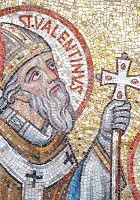 The Catholic Church distanced itself from St. Valentine's Day a while ago, and not because of any sort of distaste for chocolate hearts or hand-holding. The evidence that there really was a person who committed acts worthy of sainthood is fragmentary. Valentine is one of the "saints whose cult is larger than themselves, so to speak," according to Richard McBrien's Lives of the Saints. In 1969, the Pope quietly dropped Valentine's Day from the official calendar of saints' days.
The Catholic Church distanced itself from St. Valentine's Day a while ago, and not because of any sort of distaste for chocolate hearts or hand-holding. The evidence that there really was a person who committed acts worthy of sainthood is fragmentary. Valentine is one of the "saints whose cult is larger than themselves, so to speak," according to Richard McBrien's Lives of the Saints. In 1969, the Pope quietly dropped Valentine's Day from the official calendar of saints' days.
The consensus seems to be that Valentine is based on a Christian priest of that name who lived in Rome when the official religion was still pagan, during the reign of Claudius Gothicus, from 268 to 270 AD. This was not a proud time in the history of the empire. Rome did not decline steadily from the glorious reigns of Julius and Augustus Ceasar to the crumbling under Honorius in 423 AD. There were peaks and valleys. This was a valley. Emperors rapidly succeeded each other through assassination in the mid-Third Century. There was death by poison, death by strangulation, death by hanging, death by being dragged naked from the back of a chariot through the streets. The year 238 AD saw six different emperors.
 Claudius GothicusClaudius Gothicus, the Ceasar who would, legend has it, confront Valentine, was born a peasant in what is now Bosnia and rose rapidly through the ranks of the army. He was popular with the soldiers, a very tall man who liked to fight. His specialty was knocking out the teeth of an opponent, including, once, an opponent's horse. He played a key role in the assassination plot that eliminated Emperor Gallenius in Milan. The Rome that Claudius took charge of was near-bankrupt, with rebel populations causing lots of trouble in German and France in the West, and Syria in the East. Claudius desperately needed more soldiers in the Army, and he tried to officially discourage men from marrying.
Claudius GothicusClaudius Gothicus, the Ceasar who would, legend has it, confront Valentine, was born a peasant in what is now Bosnia and rose rapidly through the ranks of the army. He was popular with the soldiers, a very tall man who liked to fight. His specialty was knocking out the teeth of an opponent, including, once, an opponent's horse. He played a key role in the assassination plot that eliminated Emperor Gallenius in Milan. The Rome that Claudius took charge of was near-bankrupt, with rebel populations causing lots of trouble in German and France in the West, and Syria in the East. Claudius desperately needed more soldiers in the Army, and he tried to officially discourage men from marrying.
 Valentine and the Virgin
Valentine and the Virgin
As the story goes, Claudius heard that the priest Valentine was busy marrying Christian couples, in defiance of the emperor, and ordered him arrested. Pressure was put on Valentine to abandon his faith; he refused. The emperor decided to visit Valentine in prison. During this meeting, instead of being meek and obliging, Valentine tried to convert Cladius to Christianity. Disgusted, the emperor ordered his execution. Valentine was clubbed to death and then beheaded.
 LupercaliaThree centuries later, long after Claudius died of the plague, a pope declared February 14th Valentine's day. One theory is that the Catholic leaders really wanted to banish the mid-February fertility celebration of Lupercalia. (What happened during Lupercalia? Let your imagination run wild and you still haven't come close.) Naming the day in honor of the martyred Valentine seems a wee random today. Nonetheless, the new holiday stuck, and in medieval times, all sorts of romantic stories were told.
LupercaliaThree centuries later, long after Claudius died of the plague, a pope declared February 14th Valentine's day. One theory is that the Catholic leaders really wanted to banish the mid-February fertility celebration of Lupercalia. (What happened during Lupercalia? Let your imagination run wild and you still haven't come close.) Naming the day in honor of the martyred Valentine seems a wee random today. Nonetheless, the new holiday stuck, and in medieval times, all sorts of romantic stories were told.
 Shrine in DublinDid any of these sweet tales have anything to do with the Third Century Valentine? Only one--that the night before the rebellious priest was to be executed, he wrote a letter to the daughter of his jailer, and signed it "Your Valentine." The first Valentine's Day card was born.
Shrine in DublinDid any of these sweet tales have anything to do with the Third Century Valentine? Only one--that the night before the rebellious priest was to be executed, he wrote a letter to the daughter of his jailer, and signed it "Your Valentine." The first Valentine's Day card was born.
It's a story perhaps lacking in historical probability. But in the spirit of the blog hop, I'm sticking with it!
To read stories from other historical writers, jump on the hop. Here is a list of bloggers:
Hop Participants
Random Bits of Fascination (Maria Grace)Pillings Writing Corner (David Pilling)Sally Smith O’RourkeDarcyholic Diversions (Barbara Tiller Cole)Faith, Hope and Cherry TeaRosanne LortzSharon LathanDebra BrownHeyerwood (Lauren Gilbert)Regina JeffersGinger MyrickAnna BelfrageFall in love with history (Grace Elliot)Nancy BilyeauWendy DunnE.M. PowellGeorgie LeeThe Riddle of Writing (Deborah Swift)Outtakes from a Historical Novelist (Kim Rendfeld)The heart of romance (Sherry Gloag)A day in the life of patootie (Lori Crane)Karen AminadraDunhaven Place (Heidi Ashworth)Stephanie Renee dos Santos
I've written a historical thriller set in Tudor England called The Crown, with a protagonist who is a Dominican novice. The sequel, The Chalice, will be published on Feb. 28th in the United Kingdom and on March 5th in North America.
If you'd like to win a signed hardcover of The Chalice, please comment below. Include your email address, so I can get in touch with you.
I'm delighted to be a part of Maria Grace's Hearts Through History Hop. This blog hop gives me a chance to indulge in one of my favorite pastimes: researching the often strange and surprising origins of our culture's holidays, whether it's Halloween or New Year's Day.

Now clearly this hop is the occasion for a blog post about romance. Believe me, I would like to be able to deliver a sweet and touching historical anecdote. I tried. I really did. But you don't find hearts and flowers when you get to the beginning of the story of Valentine. You find martyrdom, imprisonment, plague, and death by clubbing. It's hard to conceive of anything less romantic than death by clubbing.
 The Catholic Church distanced itself from St. Valentine's Day a while ago, and not because of any sort of distaste for chocolate hearts or hand-holding. The evidence that there really was a person who committed acts worthy of sainthood is fragmentary. Valentine is one of the "saints whose cult is larger than themselves, so to speak," according to Richard McBrien's Lives of the Saints. In 1969, the Pope quietly dropped Valentine's Day from the official calendar of saints' days.
The Catholic Church distanced itself from St. Valentine's Day a while ago, and not because of any sort of distaste for chocolate hearts or hand-holding. The evidence that there really was a person who committed acts worthy of sainthood is fragmentary. Valentine is one of the "saints whose cult is larger than themselves, so to speak," according to Richard McBrien's Lives of the Saints. In 1969, the Pope quietly dropped Valentine's Day from the official calendar of saints' days.The consensus seems to be that Valentine is based on a Christian priest of that name who lived in Rome when the official religion was still pagan, during the reign of Claudius Gothicus, from 268 to 270 AD. This was not a proud time in the history of the empire. Rome did not decline steadily from the glorious reigns of Julius and Augustus Ceasar to the crumbling under Honorius in 423 AD. There were peaks and valleys. This was a valley. Emperors rapidly succeeded each other through assassination in the mid-Third Century. There was death by poison, death by strangulation, death by hanging, death by being dragged naked from the back of a chariot through the streets. The year 238 AD saw six different emperors.
 Claudius GothicusClaudius Gothicus, the Ceasar who would, legend has it, confront Valentine, was born a peasant in what is now Bosnia and rose rapidly through the ranks of the army. He was popular with the soldiers, a very tall man who liked to fight. His specialty was knocking out the teeth of an opponent, including, once, an opponent's horse. He played a key role in the assassination plot that eliminated Emperor Gallenius in Milan. The Rome that Claudius took charge of was near-bankrupt, with rebel populations causing lots of trouble in German and France in the West, and Syria in the East. Claudius desperately needed more soldiers in the Army, and he tried to officially discourage men from marrying.
Claudius GothicusClaudius Gothicus, the Ceasar who would, legend has it, confront Valentine, was born a peasant in what is now Bosnia and rose rapidly through the ranks of the army. He was popular with the soldiers, a very tall man who liked to fight. His specialty was knocking out the teeth of an opponent, including, once, an opponent's horse. He played a key role in the assassination plot that eliminated Emperor Gallenius in Milan. The Rome that Claudius took charge of was near-bankrupt, with rebel populations causing lots of trouble in German and France in the West, and Syria in the East. Claudius desperately needed more soldiers in the Army, and he tried to officially discourage men from marrying.  Valentine and the Virgin
Valentine and the VirginAs the story goes, Claudius heard that the priest Valentine was busy marrying Christian couples, in defiance of the emperor, and ordered him arrested. Pressure was put on Valentine to abandon his faith; he refused. The emperor decided to visit Valentine in prison. During this meeting, instead of being meek and obliging, Valentine tried to convert Cladius to Christianity. Disgusted, the emperor ordered his execution. Valentine was clubbed to death and then beheaded.
 LupercaliaThree centuries later, long after Claudius died of the plague, a pope declared February 14th Valentine's day. One theory is that the Catholic leaders really wanted to banish the mid-February fertility celebration of Lupercalia. (What happened during Lupercalia? Let your imagination run wild and you still haven't come close.) Naming the day in honor of the martyred Valentine seems a wee random today. Nonetheless, the new holiday stuck, and in medieval times, all sorts of romantic stories were told.
LupercaliaThree centuries later, long after Claudius died of the plague, a pope declared February 14th Valentine's day. One theory is that the Catholic leaders really wanted to banish the mid-February fertility celebration of Lupercalia. (What happened during Lupercalia? Let your imagination run wild and you still haven't come close.) Naming the day in honor of the martyred Valentine seems a wee random today. Nonetheless, the new holiday stuck, and in medieval times, all sorts of romantic stories were told.  Shrine in DublinDid any of these sweet tales have anything to do with the Third Century Valentine? Only one--that the night before the rebellious priest was to be executed, he wrote a letter to the daughter of his jailer, and signed it "Your Valentine." The first Valentine's Day card was born.
Shrine in DublinDid any of these sweet tales have anything to do with the Third Century Valentine? Only one--that the night before the rebellious priest was to be executed, he wrote a letter to the daughter of his jailer, and signed it "Your Valentine." The first Valentine's Day card was born.It's a story perhaps lacking in historical probability. But in the spirit of the blog hop, I'm sticking with it!
To read stories from other historical writers, jump on the hop. Here is a list of bloggers:
Hop Participants
Random Bits of Fascination (Maria Grace)Pillings Writing Corner (David Pilling)Sally Smith O’RourkeDarcyholic Diversions (Barbara Tiller Cole)Faith, Hope and Cherry TeaRosanne LortzSharon LathanDebra BrownHeyerwood (Lauren Gilbert)Regina JeffersGinger MyrickAnna BelfrageFall in love with history (Grace Elliot)Nancy BilyeauWendy DunnE.M. PowellGeorgie LeeThe Riddle of Writing (Deborah Swift)Outtakes from a Historical Novelist (Kim Rendfeld)The heart of romance (Sherry Gloag)A day in the life of patootie (Lori Crane)Karen AminadraDunhaven Place (Heidi Ashworth)Stephanie Renee dos Santos
I've written a historical thriller set in Tudor England called The Crown, with a protagonist who is a Dominican novice. The sequel, The Chalice, will be published on Feb. 28th in the United Kingdom and on March 5th in North America.
If you'd like to win a signed hardcover of The Chalice, please comment below. Include your email address, so I can get in touch with you.
Published on February 09, 2013 14:47
February 5, 2013
ADVANCE REVIEWS OF 'THE CHALICE'!
It's one month until The Chalice is published in North America--March 5th--and the early reviews from fellow authors and magazines are coming in. I'm very grateful for the time taken to write these reviews of my second novel.
 "Rarely have the terrors of Henry VIII's reformation been so exciting. Court intrigue, bloody executions, and haunting emotional entanglements create a heady brew of mystery and adventure that sweeps us from the devastation of the ransacked cloisters to the dangerous spy centers of London and the Low Countries, as ex-novice Joanna Stafford fights to save her way of life and fulfill an ancient prophecy, before everything she loves is destroyed." (C.W. Gortner, author of The Queen's Vow )
"Rarely have the terrors of Henry VIII's reformation been so exciting. Court intrigue, bloody executions, and haunting emotional entanglements create a heady brew of mystery and adventure that sweeps us from the devastation of the ransacked cloisters to the dangerous spy centers of London and the Low Countries, as ex-novice Joanna Stafford fights to save her way of life and fulfill an ancient prophecy, before everything she loves is destroyed." (C.W. Gortner, author of The Queen's Vow )"Superbly set in the political and religious turmoil between Henry VIII's queens Jane Seymour and Anne of Cleves, The Chalice is a dark, twisty thriller that I couldn't put down. Nancy Bilyeau's extensive historical research makes the sense of dread, danger, and mysticism permeating this era tangible. Ex-Dominican novice Joanna Stafford is an especially compelling and sympathetic heroine—I adored her!" (Kris Waldherr, author of Doomed Queens )
"An exciting and satisfying novel of historical suspense that cements Nancy Bilyeau as one of the genre's rising stars. The indominable Joanna Stafford is back with a cast of powerful and fascinating characters and a memorable story that is gripping while you are reading and haunting after you are done. Bravo! The Chalice is a fabulous read." (M.J. Rose, author of The Reincarnationist )
The Chalice offers a fresh, dynamic look into Tudor England's most powerful, volatile personalities: Henry VIII, the Duke of Norfolk, Stephen Gardiner and Bloody Mary Tudor. Heroine and former nun Joanna Stafford is beautiful, bold and in lethal danger. Bilyeau writes compellingly of people and places that demand your attention and don't let you go even after the last exciting page. (Karen Harper, author of Mistress of Mourning )
"[A] layered book of historical suspense." ( Kirkus Reviews )"Anyone who's into English history will be engaged by every page." (Suspense Magazine)
Published on February 05, 2013 14:13
January 29, 2013
The Duchess's Disgrace

Did Eleanor Cobham, the alluring duchess of Gloucester, dabble in the black arts in the 15th century? I wrote a blog post about a shocking arrest and trial for necromancy. The Lancastrian court was truly a tense and treacherous place....
http://englishhistoryauthors.blogspot.com/2013/01/the-duchess-and-necromancers.html
Published on January 29, 2013 20:47
January 6, 2013
A SIP FROM 'THE CHALICE'
The time has almost come!
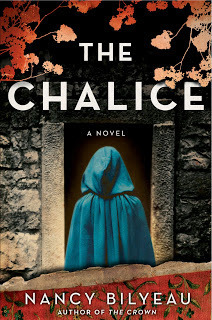 Publisher: Simon&SchusterI am so excited to share a first look at my historical thriller The Chalice, a sequel to The Crown. It will be published in the United Kingdom on Feb. 28th and in the United States and Canada on March 5th.
Publisher: Simon&SchusterI am so excited to share a first look at my historical thriller The Chalice, a sequel to The Crown. It will be published in the United Kingdom on Feb. 28th and in the United States and Canada on March 5th.I was overwhelmed by the response to my debut novel The Crown from readers and reviewers. A definite highlight of 2012 was the Crime Writers' Association putting The Crown on the shortlist of the Ellis Peters Historical Dagger Award.
I wrote my second book before the first one even came out. After selling The Crown to Simon & Schuster's Touchstone in 2010, I took a year and a half off from magazine editing and plunged into writing The Chalice. The New York Public Library granted my request to write in the Wertheim Study, and I pored through the books in its amazing collection and tapped away at my laptop computer at a long wooden table.
I flew to England in the summer of 2011 to do on-the-ground research in London and Dartford, which was honestly the most fun I have had in years. I slept one hour on the red-eye flight but nonetheless went crazy my first day, exploring nonstop for 10 hours. I was in the last group of the day to revisit my beloved Tower of London.
I finished the first draft of The Chalice in December 2011. Brilliant editors from both my American and British publishing houses gave me notes and pushed me to make the book as taut, suspenseful, lively, dramatic and moving as possible. I am grateful for all of their insights.
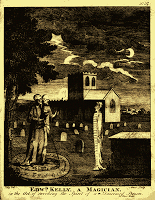 16th century necromancyThe Crown's narrative ends in the spring of 1538 and The Chalice takes up the tale in the autumn of that same year. This isn't the place to detail the plot, except to say that the framework of this novel is prophecy. Tudor England in the 1530s was rife with prophecy, whether it was the predictions of what would befall Henry VIII spoken by the Benedictine nun Elizabeth Barton, the forecasts of the legions of astrologers (some of whom doubled as physicians), or the divinings of the future obtained by the shadowy necromancers, whom people sought out at their own peril. The prophecies themselves were cryptic, filled with codes and chilling imagery.
16th century necromancyThe Crown's narrative ends in the spring of 1538 and The Chalice takes up the tale in the autumn of that same year. This isn't the place to detail the plot, except to say that the framework of this novel is prophecy. Tudor England in the 1530s was rife with prophecy, whether it was the predictions of what would befall Henry VIII spoken by the Benedictine nun Elizabeth Barton, the forecasts of the legions of astrologers (some of whom doubled as physicians), or the divinings of the future obtained by the shadowy necromancers, whom people sought out at their own peril. The prophecies themselves were cryptic, filled with codes and chilling imagery.What would happen, I decided, if my protagonist, Joanna Stafford, were to find herself part of a prophecy, and if that prophecy had the power to change the course of the kingdom? Would she plunge forward--or would she fight its power over her fate? How far would she go to restore the spiritual life she loved to England? These questions interested me and propelled me forward in the months that I wrote the novel.
Without further ado, I invite you to enter the world of The Chalice.
 First: Check out a Pinterest board I created to share the images that inspired me while writing the book: http://pinterest.com/tudorscribe/things-found-in-my-novel-the-chalice/ (Gosh, I love Pinterest!)
First: Check out a Pinterest board I created to share the images that inspired me while writing the book: http://pinterest.com/tudorscribe/things-found-in-my-novel-the-chalice/ (Gosh, I love Pinterest!)Second: Dive into the first four chapters of The Chalice, offered for free on scribd.com: http://www.scribd.com/doc/116456770/The-Chalice-by-Nancy-Bilyeau-start-reading-today
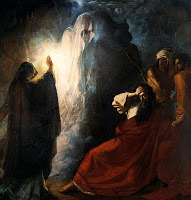
Third: Read the first post in a four-part series on The Necromancer, a dark figure that has haunted mankind since the days of Homer and right up to today's popular culture, for it's a necromancer that makes an appearance in the hit film The Hobbit http://bloodygoodread.blogspot.com/2013/01/the-ancient-art-of-necromancer.html
Fourth: Enter a giveaway to request an early review copy of The Chalice, available on goodreads:http://www.goodreads.com/giveaway/show/41228-the-chalice-a-novel
Thank you for reading this blog post and for taking an interest in my journey. If you're not following already, please join me on twitter, where I am @tudorscribe.
I hope you enjoy The Chalice!
Published on January 06, 2013 21:00
January 3, 2013
THE CROWN Makes the List!

Some wonderful news...
I'm honored to see "The Crown" on the same list as novels written by Hilary Mantel, C.W. Gortner and other amazing writers.
The Book Lounge on Sheknows.com featured "The Crown," saying:
Why it’s wonderful: The Crown includes all the drama of a historical thriller, but Bilyeau’s writing is closer to that of a traditional historical novel, with well-developed characters and rich historical detail. Bonus: This is the first in the series. Look for The Chalice in March 2013.
This is very inspiring!
To read the list, go to:
http://www.sheknows.com/entertainment/articles/980035/best-historical-fiction-2012
Published on January 03, 2013 11:45
December 26, 2012
GUEST POST: David Pilling on "The White Hawk"
Today I welcome David Pilling to my blog, to tell us about his historical novel about a fascinating chapter in the Wars of the Roses, "The White Hawk".
A Bolton, a Bolton! The White Hawk!
"A Bolton, a Bolton! The White Hawk! God for Lancaster and Saint George!"
England, 1459: the kingdom stands divided and on the brink of civil war. The factions of Lancaster and York vie for control of the King, while their armies stand poised, ready to tear each other to pieces.
The White Hawk follows the fortunes of a family of Lancastrian loyalists, the Boltons, as they attempt to survive and prosper in this world of brutal warfare and shifting alliances. Surrounded by enemies, their loyalties will be tested to the limit in a series of bloody battles and savage twists of fate.
This period, with its murderous dynastic feuding between the rival Houses of York and Lancaster, is perhaps the most fascinating of the entire medieval period in England. Having lost the Hundred Years War, the English nobility turned on each other in a bitter struggle for the crown, resulting in a spate of beheadings, battles, murders and Gangland-style politics that lasted some thirty years.
Apart from the savage doings of aristocrats, the wars affected people on the lower rungs of society. One minor gentry family in particular, the Pastons of Norfolk, suffered greatly in their attempts to survive and thrive in the feral environment of the late 15th century. They left an invaluable chronicle in their archive of family correspondence, the famous Paston Letters.
The letters provide us with a snapshot of the trials endured by middle-ranking families like the Pastons, and of the measures they took to defend their property from greedy neighbours. One such extract is a frantic plea from the matriarch of the clan, Margaret Paston, begging her son John to return from London:
"I greet you well, letting you know that your brother and his fellowship stand in great jeopardy at Caister... Daubney and Berney are dead and others badly hurt, and gunpowder and arrows are lacking. The place is badly broken down by the guns of the other party, so that unless they have hasty help, they are likely to lose both their lives and the place, which will be the greatest rebuke to you that ever came to any gentleman. For every man in this country marvels greatly that you suffer them to be for so long in great jeopardy without help or other remedy..."
The Paston Letters, together with my general fascination for the era, were the inspiration for The White Hawk. Planned as a series of three novels, TWH will follow the fortunes of a fictional Staffordshire family, the Boltons, from the beginning to the very end of The Wars of the Roses. Unquenchably loyal to the House of Lancaster, their loyalty will have dire consequences for them as law and order breaks down and the kingdom slides into civil war. The ‘white hawk’ of the title is the sigil of the Boltons, and will fly over many a blood-stained battlefield. In the following excerpt, Mary Bolton is forced to defend the family home against a private army:
Someone screamed outside. Tanner ran to drop the heavy bar across the door, but was too slow, and a big soldier wearing the silver star of Ramage on his chest burst in. His face was streaked with gore and dust, and the sword in his hand wet with blood.
Tanner, the poor fool, grabbed a pole-axe from a rack and threw himself at the soldier, who side-stepped and plunged his sword into the steward’s swollen guts. Tanner fell, squealing like a stuck pig as his entrails slid out of the great hole in his belly.
By now I had got the match lit, and lifted the gun to sight carefully along the barrel, as Hodson had taught me. I pulled the trigger, there was a bang and a flash, a terrible stink of burning powder in my nostrils, the gun jerked in my hands, and the shot flew straight and true and hit the soldier on the temple, cracking his skull and taking off the top of his head. His face wore a surprised expression as he flew backwards, almost into the arms of his mates who piled through the door in his wake.
Martin uttered a shrill yell, drew his little knife and ran at the dying man to stab at him as he lay twitching on the flagstones. One of the soldiers caught the boy’s wrist and picked him up by his neck.
“I’ve caught a rabbit, lads!” he brayed. “Shall we skin and eat him, or sell him at Lichfield market?”
The idiot paid me no heed, which was his undoing as I rushed at him, wielding my gun like a club, and smote him across the jaw with the butt. He fell away, spitting blood and teeth, and dropped Martin to the floor. I took my brother’s hand and turned to flee, God knows where, but strong arms seized and held me fast…
If all this whets your appetite, then please check out the paperback and Kindle versions of Book One below...
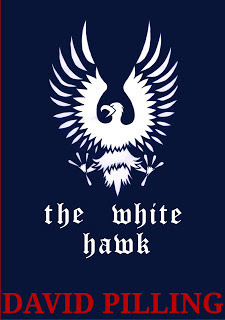
The White Hawk - paperback versionKindle version
Published on December 26, 2012 10:55



